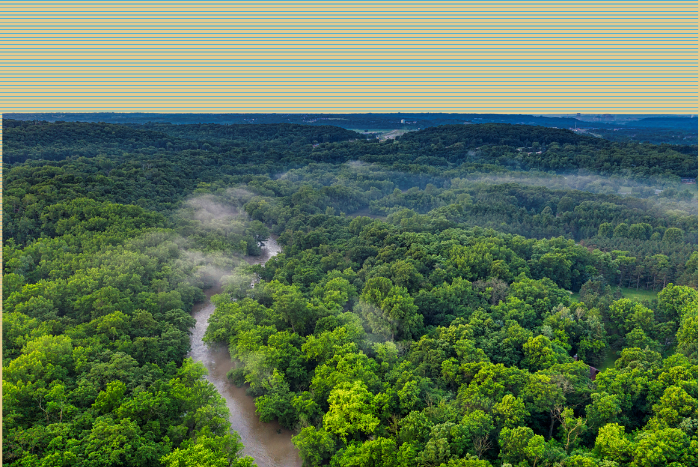The globally crucial carbon sink of old-growth tropical humid forests is declining but their regeneration can sequester large amounts of carbon and partially compensate for the emissions that were produced by their destruction, says the study
A study analysed satellite data for the three major regions of humid tropical forest on Earth — the Amazon Basin in South America, Central Africa’s Congo Basin and Borneo in Asia. It found that regrowing forests sequesters large amounts of carbon, and that this process might have mitigated about one-quarter of the emissions that originally occurred as a result of forest loss and degradation.
On the other hand, the study said, the loss and degradation of these forests release massive quantities of CO2 into the atmosphere, adding up to an amount comparable to 10% of annual global fossil-fuel emissions. Tropical forests can grow back as ‘secondary’ forests after natural or human-induced disturbances that cause deforestation, and can also recover from degradation caused by selective logging. In this process of regrowth, found the study, forests absorb CO2 from the atmosphere, which partially compensates for the emissions that were produced by their destruction.
The study mentioned that regrowing degraded and secondary forests accumulated 107 mega tonnes of CO2 between 1984-2018, counterbalancing 26% (21–34%) of carbon emissions from humid tropical forest loss during the same period.
The researchers estimated rates of recovery after deforestation and quantified the associated uptake of carbon in these regions between 1984-2018. On the basis of satellite data, the analysis studied patterns of growth in degraded and secondary forests, influenced by key environmental and anthropogenic drivers.
Between 2001-2019, emissions from forest loss in the Amazon, Borneo and Central Africa collectively made up 29% of global gross forest emissions. The study clarified that the result is a patchwork of forest types at different stages of recovery from disturbance, with limited understanding at present of their contribution to forest carbon dynamics.
Varied carbon sink potential
Tropical forests play a big role in the global carbon cycle. They absorb enormous amounts of CO2 from the atmosphere through photosynthesis and store huge amounts of carbon in tree trunks, branches, and roots.
The recovery rates of regenerating forest reported in the study for the three continents vary strongly both between and within regions. On investigating the possible sources of this variation, it was found that carbon uptake was affected by temperature, water availability, the type of disturbance and the distance from old-growth forests.
The study found that in the first 20 years of recovery, regrowth rates in Borneo were up to 45% and 58% higher than in Central Africa and the Amazon, respectively. Within the Amazon and Congo basins, the carbon uptake rate of secondary forests was one-third higher than that of degraded forests, probably because of the fast regrowth of pioneer vegetation in secondary forests.
Owing largely to the vast spatial extent of the Amazon, the carbon stored is approximately 65% higher there than in Borneo. Central Africa has the lowest total carbon storage in recovering forests, despite being the second largest of the three regions, added the study. This is because Central Africa has the fastest-growing population of the three regions. Anthropogenic pressures such as continued population growth have the largest impact on forest carbon loss by the end of the twenty-first century, which will be exacerbated by climate change, the study warned.
Carbon uptake was found to be lower in regions with a high average annual temperature than in regions that were colder on average. The analysis also revealed that carbon uptake rates are high when forest patches are close to old growth forests, demonstrating the crucial role of seed dispersal by wind or animals.
Foremost tool for climate mitigation
One of the main natural ways to slow down the effects of climate change is the carbon that is taken up during the recovery of damaged and secondary forests. However, this process is under pressure.
The report clarified that carbon uptake by regrowing forests cannot fully offset the losses incurred by the high rates at which tropical forests are being degraded and converted to agricultural land, pasture and mines. Substantially reducing tropical deforestation would therefore contribute much more to climate-change mitigation than would forest regrowth. The study recommended that avoiding deforestation, particularly that of old growth forests, should thus be a high priority for policymakers. This is not only to increase carbon storage, but also to protect the rich biodiversity of these ecosystems.
About The Author
You may also like
Cyclone Michuang triggers flash flooding along India’s southern coast; 5 lives lost so far
Swinging in the rain: India needs to redefine what a “normal” monsoon looks like
Global ocean warming and rising, growing more acidic: Report
Billions at risk of heat and humidity exposure beyond human levels: Report
Climate change threatening almost all SDGs, only 15% on track: UN Report


